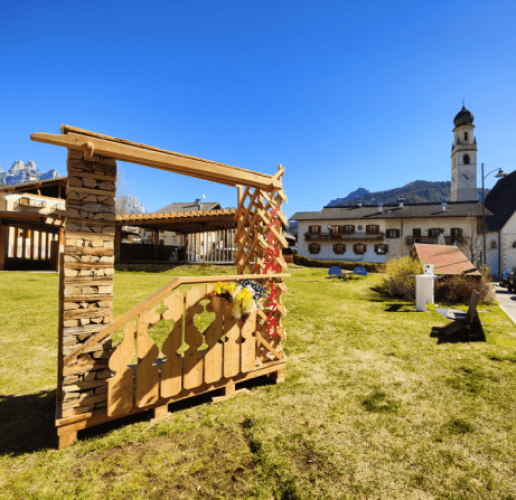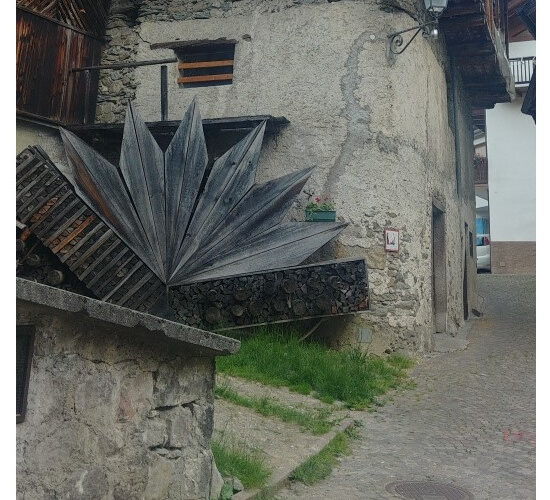Nativity scenes

As always there is never a haybarn without a stable. One cannot exist without the other. The stable in question is noteworthy and we can see that it was owned by someone wealthy. Just look at the paving that is made up of large slabs of local stone, whereas the normal, humbler stables of the village had hardpacked earthen floors. And what have the nativity scenes got to do with the stable? Wasn’t Jesus born in a stable? Reason for which…
Look at the skill used to make these nativity scenes, the information board will give you more details.
Then, as soon as you come out, go a little to the right and then immediately down the alley to the left. Worse than a maze!
If you come out alive, at the end you will see a wood installation on the balcony, “The Tablecloth”; it refers to the homemade woven material which was used as a cloth to overturn and then serve polenta on it. It symbolises hard work, dreams and the fight for the rights of the womenfolk: however, manual work also permits meditation.
To the left there is an alley, it’s the narrowest in the village and is paved in cobblestones. Be careful as it comes out onto the main road. Halfway down you will already be able to hear me for my next story.
























